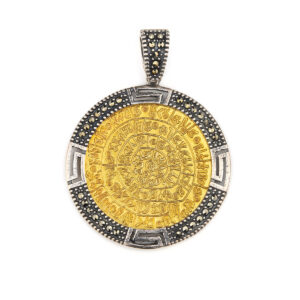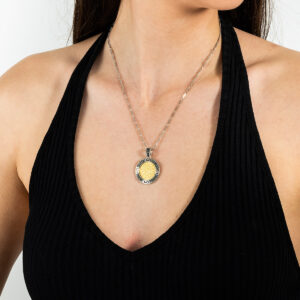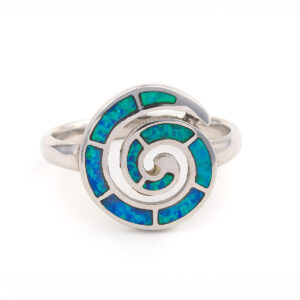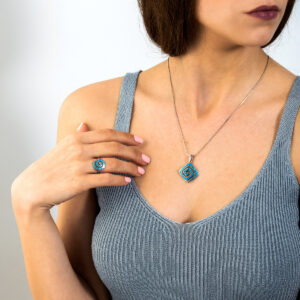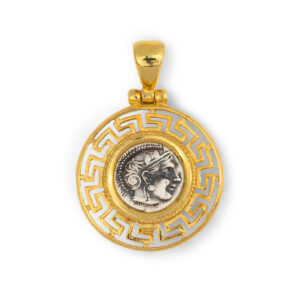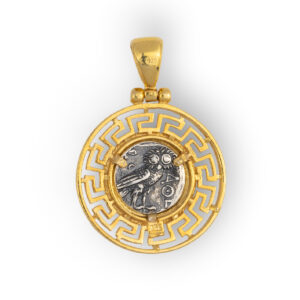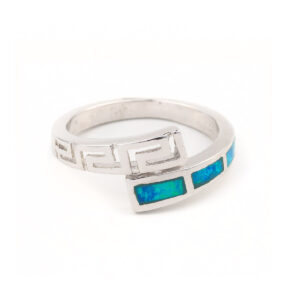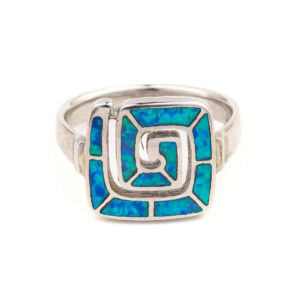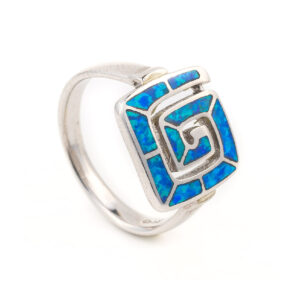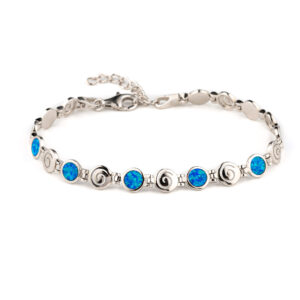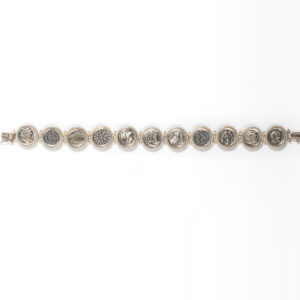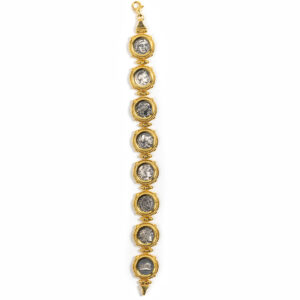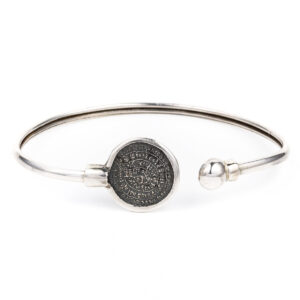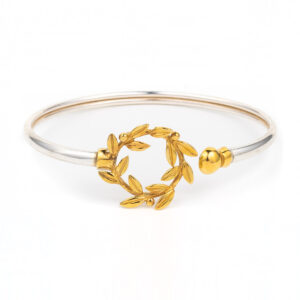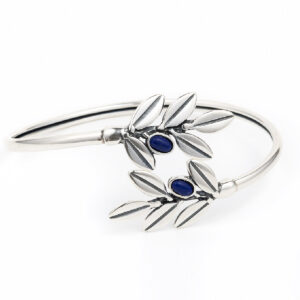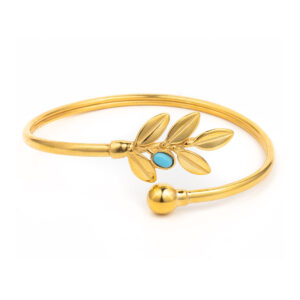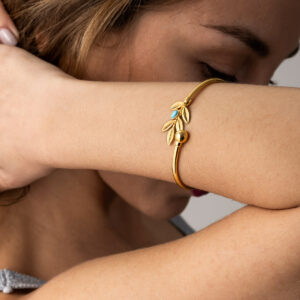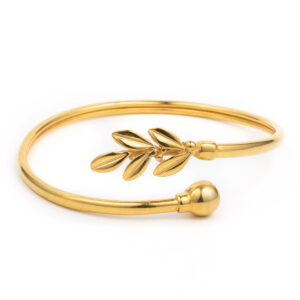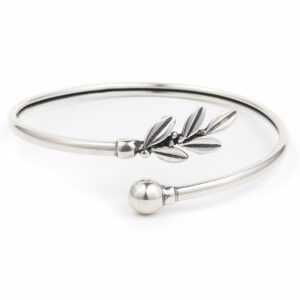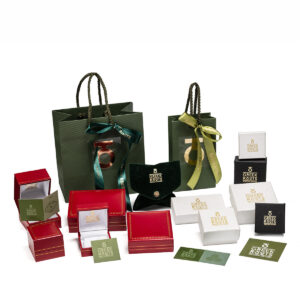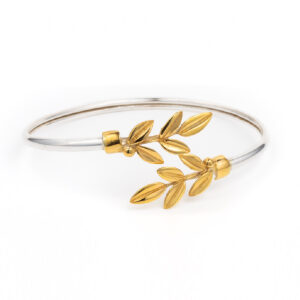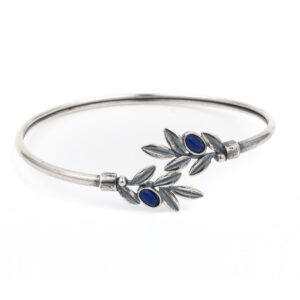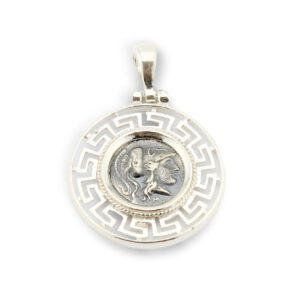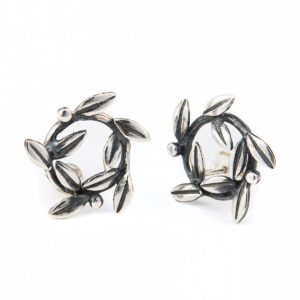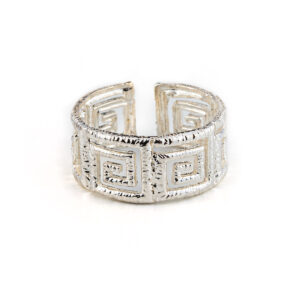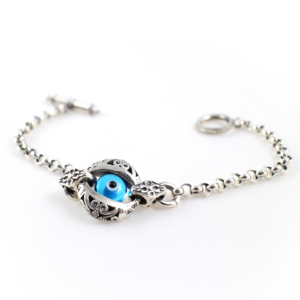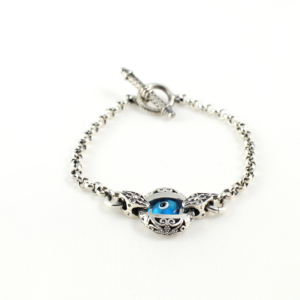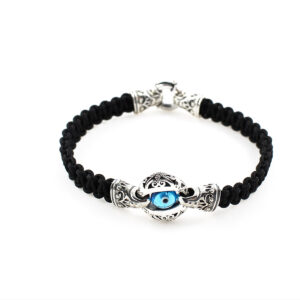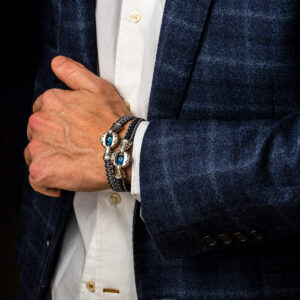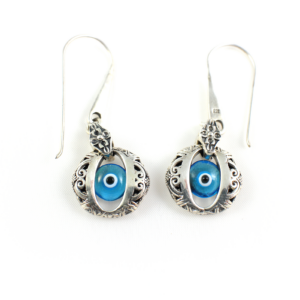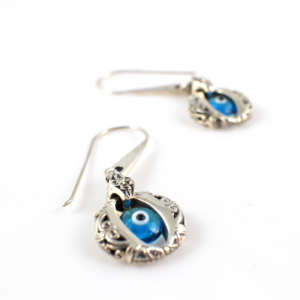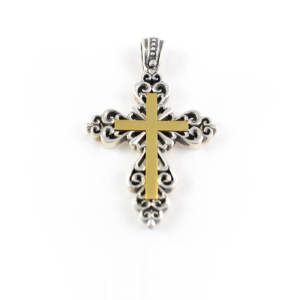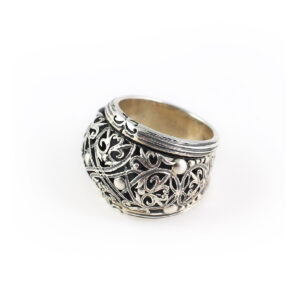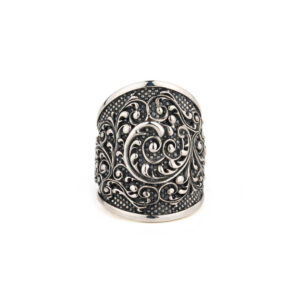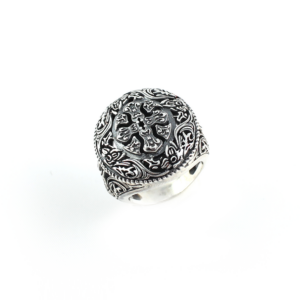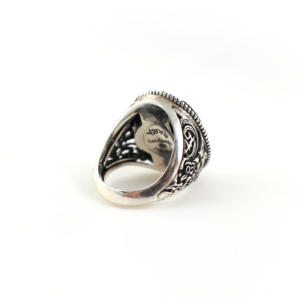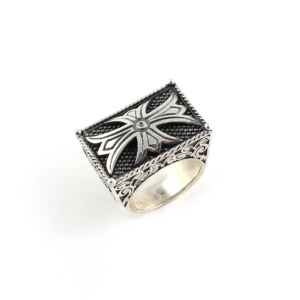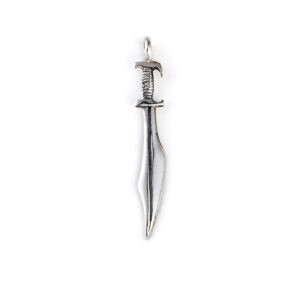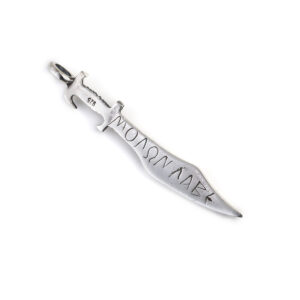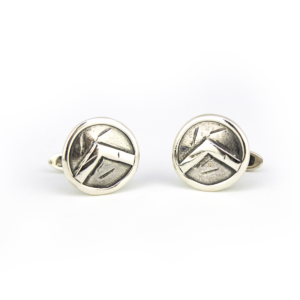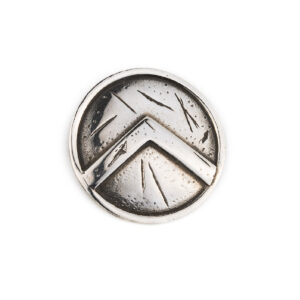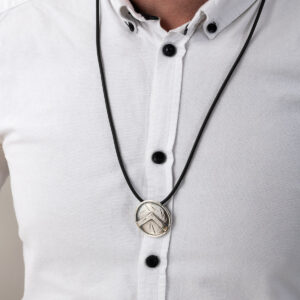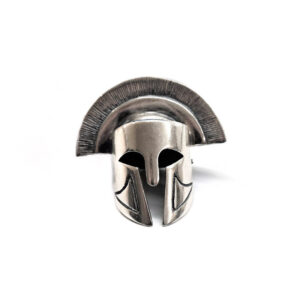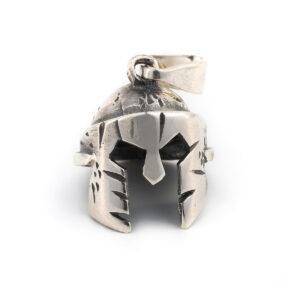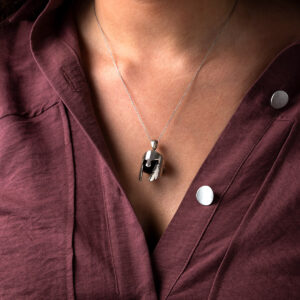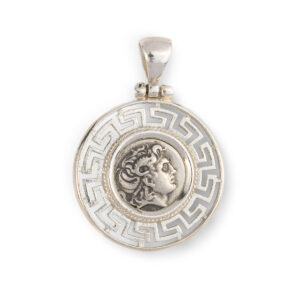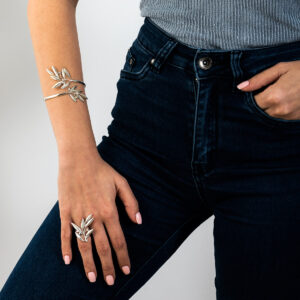Phaistos Disc Pendant – Sterling Silver Gold Plated
Phaistos Disc Pendant in sterling silver and gold plated.
The Phaistos Disc is a disk of fired clay from the Minoan palace of Phaistos on the island of Crete. Now, the island of Crete is part of modern Greece. The disc was discovered in 1908 by the Italian archaeologist Luigi Pernier in the Minoan palace-site of Phaistos. While it is not clear that it is a script, most attempted decipherments assume that it is; most additionally assume a syllabary, others an alphabet or logography or a calendar.
Handmade item.
The chain is our 925 Sterling Silver Chain in Length 50 cm (not included)
Spiral Ring – 925 Sterling Silver with Opal
Silver Ring with recurrent Greek key design the symbol of long life and eternity.
Handmade item.
Goddess Athena Pendant – Sterling Silver Gold Plated
Ancient Greek coins with the face of ancient Greek goddess Athena or Alexander The Great. In Greek mythology, Athena is the daughter of Zeus and the goddess of wisdom, handicraft, and warfare.
Handcrafted 925 sterling silver coin pendant.
Meander Opal Ring
Silver Ring with recurrent Greek key design the symbol of long life and eternity.
Made in 925⁰ sterling silver with blue opal stone.
Handmade item.
Meander Greek key Ring in Sterling Silver
Silver Ring with recurrent Greek key design, the symbol of long life and eternity.
Made in 925⁰ sterling silver
Handmade item
Spiral Bracelet – 925 Sterling Silver with Opal
This bracelet is made of sterling silver 925 with the beautiful Spiral pattern.
The spiral is one of the oldest symbols of human spirituality, carved or painted into rocks from thousands of years ago. Symbol of movement and progressive development, growth, expansion, cosmic energy, symbol of the sun..Spirals have been found in burial sites, uin vases, in jewelry, clothing, weapons… They can be seen in every aspect in nature, like the tides in the oceans, the winds, the plants, the shells. The spiral phenomenon has been explained thought mathematics from the time of Archimedes, the great Greek mathematician
Handmade item.
Bracelet with Ancient Greek symbols – Sterling Silver
This is a beautiful silver bracelet with ancient coins (replicas) representing different symbols from ancient Greek history and mythology (Spiral Of Life, ancient Greek Gods).
Handmade item.
Made of 925 sterling silver.
Ancient Greek Coins Bracelet – Sterling Silver
Bracelet with Ancient Greek symbols.
This is a beautiful silver bracelet with ancient coins (replicas) representing different symbols from ancient Greek history and mythology (Spiral Of Life, ancient Greek Gods).
Handmade item.
Phaistos Disc Hinge Bracelet – 925 Sterling Silver
This beautiful silver bracelet representing the disc of Phaistos. The Phaistos Disc is a disk of fired clay from the Minoan palace of Phaistos on the island of Crete. Now, the island of Crete is part of modern Greece. The disc was discovered in 1908 by the Italian archaeologist Luigi Pernier in the Minoan palace-site of Phaistos. While it is not clear that it is a script, most attempted decipherments assume that it is; most additionally assume a syllabary, others an alphabet or logography or a calendar.
The bracelet is bendable and one-size only.
Handmade item.
Gold Plated Olive Wreath Bracelet
Gold Plated Olive Wreath Bracelet inspired by ancient Greek kotinos design.
The olive wreath also known as kotinos was the prize for the winner at the ancient Olympic Games. It was an olive branch, of the wild- olive tree that grew at Olympia, intertwined to form a circle or a horse-shoe. According to Pausanias, it was introduced by Heracles as a prize for the running race winner to honour his father Zeus. In the ancient Olympic Games, there were no gold, silver, or bronze medals. There was only one winner per event, crowned with an olive wreath made of wild olive leaves from a sacred tree near the temple of Zeus at Olympia. Olive wreaths were given out during the 2004 Summer Olympics in Athens in honor of the ancient tradition because the games were being held in Greece.
The bracelet is bendable.
Handmade item.
Olive Leaves Silver Bracelet
Olive Leaves Silver Bracelet. A beautiful and elegant bracelet tribute to the olive branch, a symbol of peace, abundance and achievement. The olive wreath also known as kotinos was the prize for the winner at the ancient Olympic Games. It was an olive branch, of the wild- olive tree that grew at Olympia, intertwined to form a circle or a horse-shoe. According to Pausanias it was introduced by Heracles as a prize for the running race winner to honour his father Zeus. In the ancient Olympic Games there were no gold, silver, or bronze medals. There was only one winner per event, crowned with an olive wreath made of wild-olive leaves from a sacred tree near the temple of Zeus at Olympia. Olive wreaths were given out during the 2004 Summer Olympics in Athens in honor of the ancient tradition, because the games were being held in Greece.
The bracelet is bendable.
Handmade item.
Sterling Silver Gold Plated Bracelet With Olive Leaves
The olive wreath also known as kotinos was the prize for the winner at the ancient Olympic Games. It was an olive branch, of the wild- olive tree that grew at Olympia, intertwined to form a circle or a horse-shoe. According to Pausanias, it was introduced by Heracles as a prize for the running race winner to honour his father Zeus. In the ancient Olympic Games, there were no gold, silver, or bronze medals. There was only one winner per event, crowned with an olive wreath made of wild olive leaves from a sacred tree near the temple of Zeus at Olympia. Olive wreaths were given out during the 2004 Summer Olympics in Athens in honor of the ancient tradition because the games were being held in Greece.
The bracelet is bendable and one-size only.
Made in 925⁰ sterling silver and gold plated.
Handmade item.
Olive Leaf Hinge Bracelet – 925 Sterling Silver and Gold Plated
The olive wreath also known as kotinos was the prize for the winner at the ancient Olympic Games. It was an olive branch, of the wild- olive tree that grew at Olympia,intertwined to form a circle or a horse-shoe. According to Pausanias it was introduced by Heracles as a prize for the running race winner to honour his father Zeus. In the ancient Olympic Games there were no gold, silver, or bronze medals. There was only one winner per event, crowned with an olive wreath made of wild-olive leaves from a sacred tree near the temple of Zeus at Olympia. Olive wreaths were given out during the 2004 Summer Olympics in Athens in honor of the ancient tradition, because the games were being held in Greece.
The bracelet is bendable.
Handmade item.
Alexander the Great Hinge Bracelet –925 Sterling Silver
Alexander the Great Coin Bracelet.
Alexander the Great the King of Macedonia is considered one of the most important forms of world history.
The bracelet is bendable.
Made in 925⁰ sterling silver
Handmade item
Olive Leaves Hinge Bracelet – 925 Sterling Silver and Gold Plated
This is a silver bracelet with olive leaves. The olive wreath also known as kotinos was the prize for the winner at the ancient Olympic Games. It was an olive branch, of the wild- olive tree that grew at Olympia, intertwined to form a circle or a horse-shoe. According to Pausanias it was introduced by Heracles as a prize for the running race winner to honour his father Zeus. In the ancient Olympic Games there were no gold, silver, or bronze medals. There was only one winner per event, crowned with an olive wreath made of wild-olive leaves from a sacred tree near the temple of Zeus at Olympia. Olive wreaths were given out during the 2004 Summer Olympics in Athens in honor of the ancient tradition, because the games were being held in Greece.
The bracelet is bendable.
Handmade item.
Made of 925 sterling silver, gold plated or rose gold plated.
Olive Leaves Bracelet With Stones
This is an elegant and unique silver bracelet with olive leaves and stones. The olive wreath also known as kotinos was the prize for the winner at the ancient Olympic Games. It was an olive branch, of the wild- olive tree that grew at Olympia, intertwined to form a circle or a horse-shoe. According to Pausanias it was introduced by Heracles as a prize for the running race winner to honour his father Zeus. In the ancient Olympic Games there were no gold, silver, or bronze medals. There was only one winner per event, crowned with an olive wreath made of wild-olive leaves from a sacred tree near the temple of Zeus at Olympia. Olive wreaths were given out during the 2004 Summer Olympics in Athens in honor of the ancient tradition, because the games were being held in Greece.
The bracelet is bendable.
Handmade item.
Athena Greek Goddess Coin Pendant – 14K Gold and Sterling Silver
184,00€ – 495,00€One of the most popular ancient Greek coins illustrates Athena’s head on one side and the wisdom owl on the other.
Made in-house in 925⁰ sterling silver and 14k solid gold bezel and hook.
14K Gold Box Chain in Length 50cm (not included).
As in all handmade items there may be small differences in weight and dimensions and this is what makes them unique and precious.
Explore Coins Collection
Goddess Athena and Owl – Athenian silver tetradrachm
Dracma was the currency used in Greece during several periods in its history. The tetradrachm was an Ancient Greek silver coin equivalent to fourdrachmae in Athens it replaced the earlier “heraldic” type of didrachms and it was in wide circulation from ca. 510 to ca. 38 BC. This coin belongs to the so-called “new style Athenian coins” minted between 166 and 64 B.C. and is considered one of the most popular ancient Greek coins which illustrate the portrait of Goddess Athena on the one side and the wisdom owl on the other. Athena is an ancient Greek goddess associated with wisdom, handicraft, and warfare. Athena was regarded as the patron and protectress of various cities across Greece, particularly the city of Athens, from which she most likely received her name. She’s usually shown in art wearing a helmet and holding a spear. Her major symbols include owls, olive trees, and snakes. Her temples were located atop the fortified Acropolis in the central part of the city. The Parthenon on the Athenian Acropolis is dedicated to her, along with numerous other temples and monuments. Her main festival in Athens was the Panathenaia, which was celebrated in midsummer and was the most important festival on the Athenian calendar. In the classical Olympian pantheon, Athena was regarded as the favorite daughter of Zeus. The owl traditionally accompanies Athena. Because of such association, the owl has been used as a symbol of knowledge and wisdom. The inscriptions contain the city’s “national” appellation (“ΑΘΕ», i.e. “of the Athenians”).
Goddess Athena Coin Pendant – 925 Sterling Silver
This Ancient Greek coin represents Athena Chalinitis on the front side and the inscription “ΑΛΕΞΑΝΔΡΟΥ” on the back side
Made of 925 sterling silver.
Handmade item.
Athena – Stater of Corinth
This silver stater of Corinth depicting the head of Athena Chalinitis.
Silver Olive Wreath Ancient Greek Earrings
These silver earrings are inspired by the ancient olive wreath!
The olive wreath also known as kotinos was the prize for the winner at the ancient Olympic Games. It was an olive branch, of the wild- olive tree that grew at Olympia, intertwined to form a circle or a horse-shoe.
Also available in gold plated.
Made in 925⁰ sterling silver.
Handmade item
Meander Ring – 925 Sterling Silver
Adjustable ring with recurrent Greek key design, the symbol of long life and eternity.
Made of 925⁰ sterling silver.
Handmade item
Available also in gold plated.
Good Luck Eye Charm Bracelet – Sterling Silver Yianni Jewelry
Made in 925° sterling silver.
Handmade Item.
Silver creations of Yianni Jewelry, created by Garbis Khacherian, a silversmith trader since 1987.
Evil Eye Macrame Bracelet – Sterling Silver Yianni Jewelry
Handcrafted, sterling silver, good luck eye charm with macrame bracelet.
Silver creations of Yianni Jewelry, created by Garbis Khacherian, a silversmith trader since 1987.
The evil eye is a look that is believed by many cultures to be able to cause injury or bad luck for the person at whom it is directed for reasons of envy or dislike. Attempts to ward off the curse of the evil eye has resulted in a number of talismans in many cultures. Balls, consisting of concentric blue and white circles (usually, from inside to outside, dark blue, light blue, white, dark blue) representing an evil eye are common apotropaic talismans in the Middle East, which are supposed to bend the malicious gaze back to the sorcerer.
Byzantine Evil Eye Earrings – Sterling Silver Yianni Jewelry
Byzantine Silver Cross Julian – Yianni Jewelry
Cross with granules of precious metal and karavolos design in the center. Granulation is a jewellery technique whereby a surface of a jewel is covered with small spheres or granules. The technique is thought to have its origins in Mesopotamia about 5,000 years ago. Karavolo which means when a wire forms elaborate spirals.
Black oxidized background.
Made in 925° sterling silver.
Handmade Cross, inspired by Greek tradition & byzantine art.
Silver creations of Yianni Jewelry, created by Garbis Khacherian, a silversmith trader since 1987.
Julian, also known as Julian the Apostate, was Roman Emperor from 361 to 363, as well as a notable philosopher and author in Greek. He was the last emperor of the Constantinian dynasty.
Silver Gold Plated Byzantine Cross IRENE – Yianni Jewelry
This cross called “Irene-Irene of Athens”.
Empress Irene of Athens was the first female ruler of the Byzantine Empire. Born in Athens around 752 and she was the wife of the Byzantine Emperor Leo IV. she helped bring an end to the iconoclastic controversy. In 787 she called the Second Council of Nicaea which condemned the practice of iconoclasm and restored the veneration of icons to Christian practice. Deposed in a palace coup in 802, she was exiled and died on 9 August 803.
Made in 925° sterling silver.
Handmade Cross, inspired by Byzantine art.
Silver creations of Yianni Jewelry, created by Garbis Khacherian, a silversmith trader since 1987.
Round Floral Ring – Sterling Silver Yianni Jewelry
Ring made with the ancient technique of “Granulation” by soldering each silver balls precisely and wrapping silver wire around the ring in proper way give this look.
Made of 925⁰ sterling silver
Handmade item.
Silver creations of Yianni Jewelry, created by Garbis Khacherian, a silversmith trader since 1987.
Explore Yianni Jewellery
Byzantine Floral Ring – Sterling Silver Yianni Jewelry
Floral Ring with granulation technic.
Black oxidized background.
Made in 925⁰ sterling silver
Handmade item.
Granulation is a jewellery technique whereby a surface of a jewel is covered with small spheres or granules of precious metal. The technique is thought to have its origins in Mesopotamia about 5,000 years ago.
Inspired by Byzantine Jewelry.
Silver creations of Yianni Jewelry, created by Garbis Khacherian, a silversmith trader since 1987.
Explore Yianni Jewellery
Ancient Akrokeramo Ring Sterling Silver – Yianni Jewelry
This beautiful ring is inspired by Greek tradition and Byzantine art. Τhe ring is decorated with the ancient Greek motif “Akrokeramo”.
Akrokeramo is a decorative, architectural element known by Ancient Greece. It is the ultimate tile that held in place the remaining tiles. The most widespread is the amphitheater with the leaves of the palm tree (anthemio).
Black oxidized background.
Made in 925⁰ sterling silver
Handmade item.
Silver creations of Yianni Jewelry, created by Garbis Khacherian, a silversmith trader since 1987.
Explore Yianni Jewellery
Sterling Silver Cross Ring – Yianni Jewelry
Round Ring with cross
Inspired by byzantine art.
Made in 925⁰ sterling silver
Handmade item.
Silver creations of Yianni Jewelry, created by Garbis Khacherian, a silversmith trader since 1987.
Explore Yianni Jewellery
Byzantine Cross Ring Theodora – Yianni Jewelry
This ring is called Theodora.
Made in 925⁰ sterling silver.
Handmade item.
The shape and decoration of this ring shows the influence of the Byzantine art.
Silver creations of Yianni Jewelry, created by Garbis Khacherian, a silversmith trader since 1987.
Theodora was empress of the byzantine empire wife of Emperor. The ring is embellished with a pretty filigree with refined pattern. The art of filigree dates back to ancient history. The first of the found jewelry in this technique have been found in Mesopotamia and dates to thousands of years BC. In the ancient world and particularly in Asia Minor, the art of granulation grew were at the highest level, where they were inherited by the Byzantine Empire.
Explore Yianni Jewellery
Spartan Sword Pendant – Sterling Silver
Leonidas sword pendant.
Handmade pendant.
Made of 925⁰ sterling silver.
On the reverse side is the inscription “μολών λαβέ” which means “come to get”. This phrase was the answer to Xerxes when he asked him to hand over the arms of the defending Greeks to the Thermopylae. Leonidas was a warrior king of the Greek city-state of Sparta. Arguably, one of the greatest heroes in the history of ancient Greece. In 480 B.C Leonidas led an army of 6,000 to 7,000 Greeks from many city-states, including 300 Spartans, who fought the invading Persian army at the pass of Thermopylae. Leonidas of Sparta blocked the only road through which the massive army of Xerxes could pass. The Persians succeeded in defeating the Greeks but sustained heavy losses. A local resident named Ephialtes led the Persian general by a mountain track to the rear of the Greeks. King Leonidas sent away all the Greek troops and stayed behind with 300 Spartans, 400 Thebans, and 700 Thespian volunteers who refused to leave. They were all killed on the battlefield, protecting their homeland.
Spartan Shield Cufflinks – 925 Sterling Silver
Silver cufflinks depicting a Spartan shield. Sparta or Lace daemon was a prominent city-state in ancient Greece in south-eastern Peloponnese. The letter lambda (Λ), standing for Laconia or Lacedaemon, which was painted on the Spartans’ shields, was first adopted in the 420s BC, and quickly became a widely known Spartan symbol. Military families passed on their shields to each generation as family heirlooms.
Made of 925⁰ sterling silver
Handmade item.
Spartan Shield Pendant – 925 Sterling Silver
This pendant represents the shield of Leonidas.
Made of 925⁰ sterling silver.
Handmade pendant.
The cord is included with the large size
Leonidas was a warrior king of the Greek city-state of Sparta. Arguably, one of the greatest heroes in the history of ancient Greece. In 480 B.C Leonidas led an army of 6,000 to 7,000 Greeks from many city-states, including 300 Spartans, who fought the invading Persian army at the pass of Thermopylae. Leonidas of Sparta blocked the only road through which the massive army of Xerxes could pass. The Persians succeeded in defeating the Greeks but sustained heavy losses. A local resident named Ephialtes led the Persian general by a mountain track to the rear of the Greeks. King Leonidas sent away all the Greek troops and stayed behind with 300 Spartans, 400 Thebans, and 700 Thespian volunteers who refused to leave. They were all killed on the battlefield, protecting their homeland.
Spartan Helmet Pendant – 925 Sterling Silver
Ancient Greek officer’s helmet from the famous city of Sparta.
Sparta or Lacedaemon was a prominent city-state in ancient Greece in south-eastern Peloponnese. Spartan hoplites were often depicted bearing a transverse horsehair crest on their helmet, which was possibly used to identify officers. In the Archaic period, Spartans were armored with flanged bronze cuirasses, leg greaves, and a helmet, often of the Corinthian type.
Made of 925⁰ sterling silver.
Handmade item.
Leonidas Helmet Pendant – 925 Sterling Silver
Replica of the helmet of Spartan King Leonidas.
Handmade pendant of 925⁰ sterling silver.
The chain shown is our Sterling Silver Cable Chain – Length 45 cm (not included).
Leonidas was a warrior king of the Greek city-state of Sparta. In 480 B.C Leonidas led an army of 6,000 to 7,000 Greeks from many city-states, including 300 Spartans, who fought the invading Persian army at the pass of Thermopylae. Leonidas of Sparta blocked the only road through which the massive army of Xerxes could pass. The Persians succeeded in defeating the Greeks but sustained heavy losses. A local resident named Ephialtes led the Persian general by a mountain track to the rear of the Greeks. King Leonidas sent away all the Greek troops and stayed behind with 300 Spartans, 400 Thebans, and 700 Thespian volunteers who refused to leave. They were all killed on the battlefield, protecting their homeland.
Alexander the Great Coin Pendant – Sterling Silver
Ancient Greek coin representing Alexander the Great on one side and King Lychimahos on the other.
Made of 925⁰ silver with the Greek key design known as meandros.
Handmade item
The chain shown is our Sterling Silver Cable Chain – Length 45 cm (not included).
Meandros design is a decorative border constructed from a continuous line, shaped into a repeated motif. Such a design is also called the Greek fret or Greek key design, although these are modern designations. On the one hand, the name “meander” recalls the twisting and turning path of the Meander River in Asia Minor, and on the other hand, as Karl Kerenyi pointed out, “the meander is the figure of a labyrinth in linear form” the meaning is that there is no beginning and no end in some cases so it becomes the symbol of long life and eternity.
Goddess Athena Pendant – Sterling Silver
One of the most popular ancient Greek coins illustrates Athena’s head on one side and the wisdom owl on the other.
Made in-house in 925⁰ sterling silver and the perimeter is decorated with meander or the Greek key design.
Available in gold plated.
The chain shown is our 925 Sterling Silver Oxidized Wheat Chain (not included)
Goddess Athena and Owl – Athenian silver tetradrachm
Dracma was the currency used in Greece during several periods in its history. The tetradrachm was an Ancient Greek silver coin equivalent to fourdrachmae in Athens it replaced the earlier “heraldic” type of didrachms and it was in wide circulation from ca. 510 to ca. 38 BC. This coin belongs to the so-called “new style Athenian coins” minted between 166 and 64 B.C. and is considered one of the most popular ancient Greek coins which illustrate the portrait of Goddess Athena on the one side and the wisdom owl on the other. Athena is an ancient Greek goddess associated with wisdom, handicraft, and warfare. Athena was regarded as the patron and protectress of various cities across Greece, particularly the city of Athens, from which she most likely received her name. She’s usually shown in art wearing a helmet and holding a spear. Her major symbols include owls, olive trees, and snakes. Her temples were located atop the fortified Acropolis in the central part of the city. The Parthenon on the Athenian Acropolis is dedicated to her, along with numerous other temples and monuments. Her main festival in Athens was the Panathenaia, which was celebrated in midsummer and was the most important festival on the Athenian calendar. In the classical Olympian pantheon, Athena was regarded as the favorite daughter of Zeus. The owl traditionally accompanies Athena. Because of such association, the owl has been used as a symbol of knowledge and wisdom. The inscriptions contain the city’s “national” appellation (“ΑΘΕ», i.e. “of the Athenians”).
Olive Leaf Hinge Bracelet in 925 Sterling Silver
The olive wreath also known as kotinos was the prize for the winner at the ancient Olympic Games. It was an olive branch, of the wild- olive tree that grew at Olympia,intertwined to form a circle or a horse-shoe. According to Pausanias it was introduced by Heracles as a prize for the running race winner to honour his father Zeus. In the ancient Olympic Games there were no gold, silver, or bronze medals. There was only one winner per event, crowned with an olive wreath made of wild-olive leaves from a sacred tree near the temple of Zeus at Olympia. Olive wreaths were given out during the 2004 Summer Olympics in Athens in honor of the ancient tradition, because the games were being held in Greece.
Available in gold and silver.
Made in 925⁰ sterling silver
This beautiful bracelet is bendable and is slid on to the wrist.
Handmade item.

